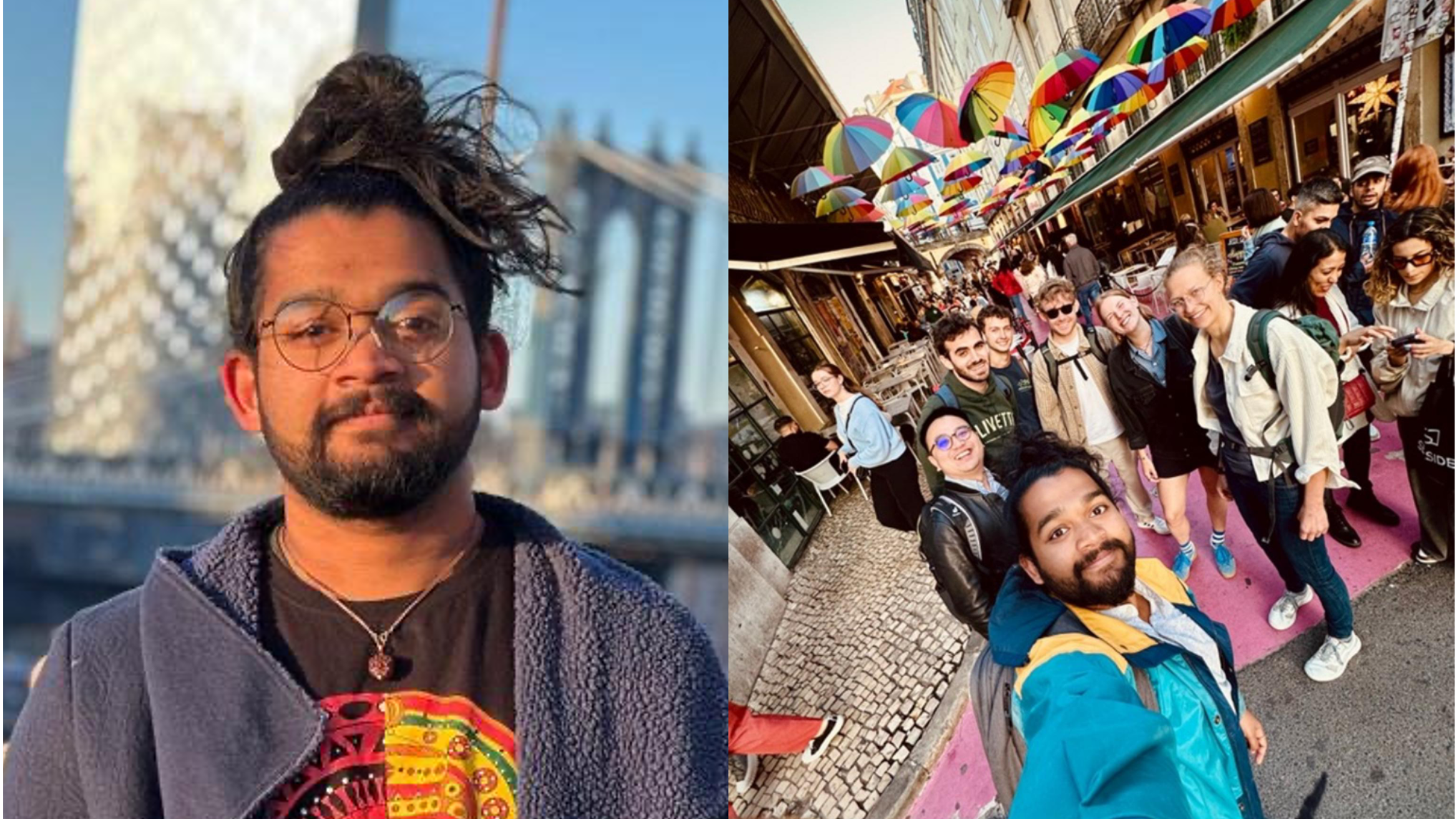You are here :
The Interview of the Month - Vignesh Gokuladas Menon

This spring, EUTOPIA gathered young researchers and companies gathered in Lisbon to spend a week tackling some pressing challenges for Portugal’s coasts and oceans. For doctoral student Vignesh Gokuladas Menon, it led to the idea of a deploy-anywhere buoy designed to serve both marine research and maritime security.
Vignesh is a marine geologist, interested in understanding how human activities such as bottom trawling reshape the seafloor by altering sediment behaviour, disrupting carbon storage and affecting marine ecosystems. He also studies how restoration efforts can help reverse these impacts.
When he got the chance to travel to NOVA University in Lisbon and take part in the Ocean Innovation Challenges for Researchers, he saw it as an opportunity to step outside the academic bubble. As one of 17 young researchers from the EUTOPIA university alliance, he was able to choose among real-world ocean challenges that companies and organisations wanted help to solve, for example in shipping and marine management.‘’I enjoy working in the intersection between fieldwork, laboratory experiments and applied solutions. My goal is for my research to contribute to practical strategies for ocean sustainability,’’
‘’It felt like the perfect opportunity to test how my scientific background could contribute to industry-driven solutions.’’
An intelligent buoy
Vignesh took on a challenge from Blue Oasis, a Portuguese technology and innovation company in the marine sector. Together with a linguist and a computer scientist, he designed a concept for an intelligent deploy-anywhere dual-use buoy system capable of supporting both biodiversity monitoring and maritime security.
‘’After identifying the needs – from research on coral reef recovery to detecting illegal fishing – we brainstormed ideas. The result was a concept for an autonomous “smart” buoy, equipped with sensors for different tasks and capable of analysing data in real time.’’
The buoy can be used in both small coastal projects and large offshore arrays. It is designed to serve a dual role: on one side, supporting scientific research and conservation, and on the other, providing security and surveillance benefits for ports, marine protected areas, and governments.
In addition to the concept itself, the team also developed a business model describing potential applications, target groups and markets – to demonstrate how the idea could move beyond a prototype into real-world applications.
"Importantly, we built a business model that addressed dual-use value: on the one hand supporting scientific research and conservation, and on the other, providing security and monitoring benefits for ports, marine protected areas and governments.’’
An intensive week with new insights
The week in Lisbon was intensive. Developing both a concept and a business model required focus and compromise.
‘’The biggest challenge was listening and communicating across disciplines and priorities. At the same time, it was precisely our different backgrounds that allowed us to approach the problem from completely different angles. This often led to unexpected but creative ideas.’’
The challenges facing the oceans are complex and interconnected, requiring expertise from science, engineering, economics and much more. No single discipline can provide a complete solution. For Vignesh, the week was a lesson in how innovation thrives where perspectives meet – and how collaborations between academia and industry are key to turning ideas from theory into practical solutions.
‘’In the case of the buoy, it was the combination of scientific understanding and engineering design that made the concept viable.’’
Encourages others to seize the opportunity
He encourages other young researchers to take part in similar initiatives. It is a chance to stretch yourself, collaborate across boundaries and make your research more relevant to society.
‘’It is also an opportunity to meet new people, work intensively on a shared challenge and in this case, explore a city like Lisbon along the way. Even if you are outside your comfort zone, that is exactly where the growth and inspiration happen. I left with new skills, new contacts and a sense of how my work fits into the bigger picture,’’
Original article published by University of Gothenburg


